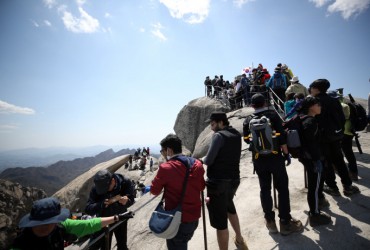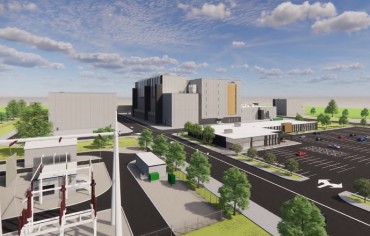SEOUL, May 26 (Korea Bizwire) — South Korea’s interest rate freeze is seen as reflecting its improving economic fundamentals and the central bank’s stance to size up the effect of the new government’s economic policy on growth.
As widely expected, the Bank of Korea (BOK) held the country’s benchmark interest rate at a record low of 1.25 percent Thursday, extending its wait-and-see approach for the 11th consecutive month.
The rate freeze came as Asia’s fourth-largest economy seems to be getting out of a prolonged funk, bolstered by resilient exports, rising business confidence and signs of improving consumer spending and other major indicators.
Indeed, BOK Gov. Lee Ju-yeol echoed the view. “Based on a comprehensive analysis of economic indicators, (the pace of economic growth) is deemed faster than expected in April,” Lee said during a press conference following a monthly policy meeting. “Considering various conditions, the current level of interest rates is sufficiently easy.”
South Korea’s exports, one of the country’s main growth engines, have been on the mend since late last year, led by an upturn in oil prices and recovering world trade.
Overseas shipments surged 24.2 percent on-year to US$51 billion in April on brisk overseas demand for South Korean ships and chips, extending their positive run to six months.
It marked the second-largest monthly volume since October 2014, when shipments reached $51.6 billion, while exports posted double-digit growth for four months in a row for the first time in nearly seven years.
The central bank expected South Korea’s exports and corporate investment to grow at a faster pace down the road, with consumer spending likely to continue its moderate upturn.
“The BOK will likely revise up its economic growth projection for 2017, when it publishes a revised growth outlook in July,” Lee said.
In April, the central bank hiked its 2017 growth estimate to 2.6 percent from an earlier 2.5 percent.
On top of strong exports, economic players’ confidence has been perking up in recent months, serving as a tailwind for the economy struggling with still sluggish domestic demand.
The country’s composite consumer sentiment index came to 101.2 for April, hovering above the benchmark 100 for the first time in six months. A reading above 100 means optimists outnumber pessimists.
South Korean manufacturers’ business sentiment for next month rose for the fourth consecutive month in April as local companies expected steady gains in domestic demand and exports.
The country’s consumer prices gained 1.9 percent last month from a year earlier, matching the BOK’s yearly forecast of 1.9 percent. International oil prices have been hovering at $50 per barrel, with the local currency remaining strong against the U.S. dollar.
Domestic demand has also been perking up this year, albeit at a slow pace. Combined sales of department stores, large outlets and online shopping malls rose 6.9 percent in March from a year earlier, accelerating from a 0.1 percent gain the previous month.
The rate freeze also came two weeks after President Moon Jae-in took office with a pledge to implement an extra budget of 10 trillion won ($8.9 billion) this year to help create new jobs in the public sector and revive the local economy.
While campaigning for the May 9 snap presidential election, Moon of the liberal Democratic Party of Korea vowed to raise the ratio of government fiscal spending to the gross domestic product to 7 percent during his tenure from the current 3.5 percent.
“At this point, there is a need (for the government) to harness its fiscal policy,” the top central banker said. “The BOK maintains its view that fiscal spending could have a greater impact on the economy under the current low-rate situation.”
Going forward, South Korea’s high household debt and possible U.S. rate hikes are feared to restrict the BOK’s monetary policy for the remainder of the year.
South Korea’s household debt reached a record high of 1,359.7 trillion won at the end of March, with its growth pace losing steam. The debt grew 1.3 percent in the first quarter from three months earlier, compared with a 3.6 percent on-quarter gain in the fourth quarter of last year.
“The level of bank and nonbank loans to households remains high. At the moment, it’s difficult to judge that household lending has swung to a downturn,” Lee said. “But the pace of its growth is likely to slow down in the coming months as the government will continue its efforts to curb household debt.”
In March, the U.S. Federal Reserve hiked its key rate by a quarter of a percentage point to a target range of 0.75 to 1 percent, signaling that additional hikes would be made in a gradual manner later this year.
A U.S. rate hike usually pressures the BOK to follow suit to stem an outflow of foreign capital, but South Korea’s high household debt makes the central bank reluctant to carry out a rate hike that could sharply raise the interest burden of indebted households.
(Yonhap)







